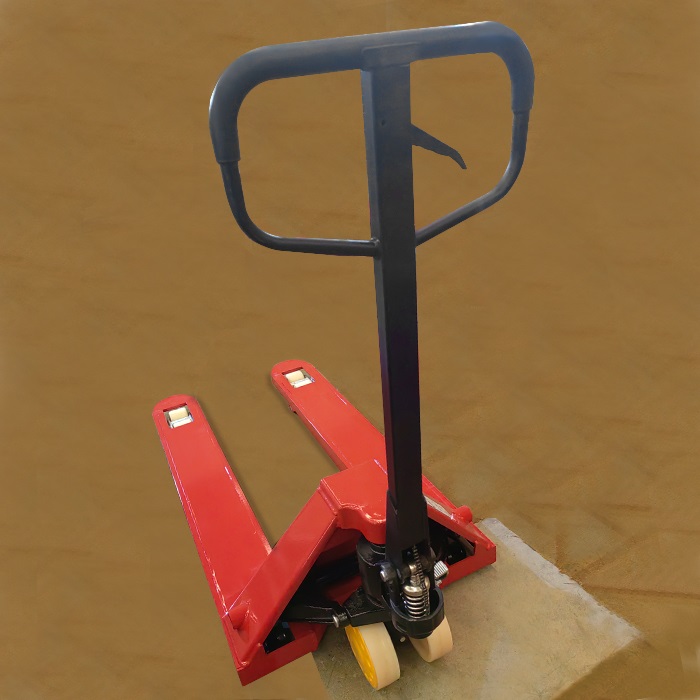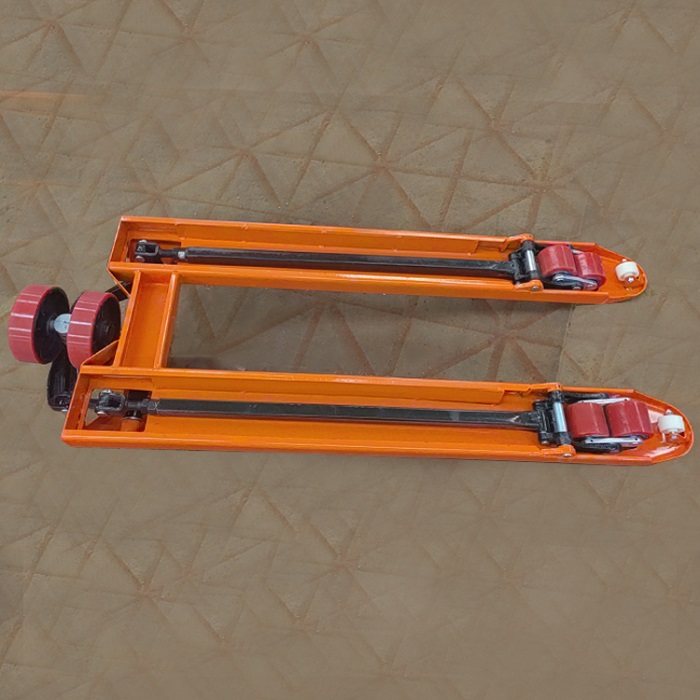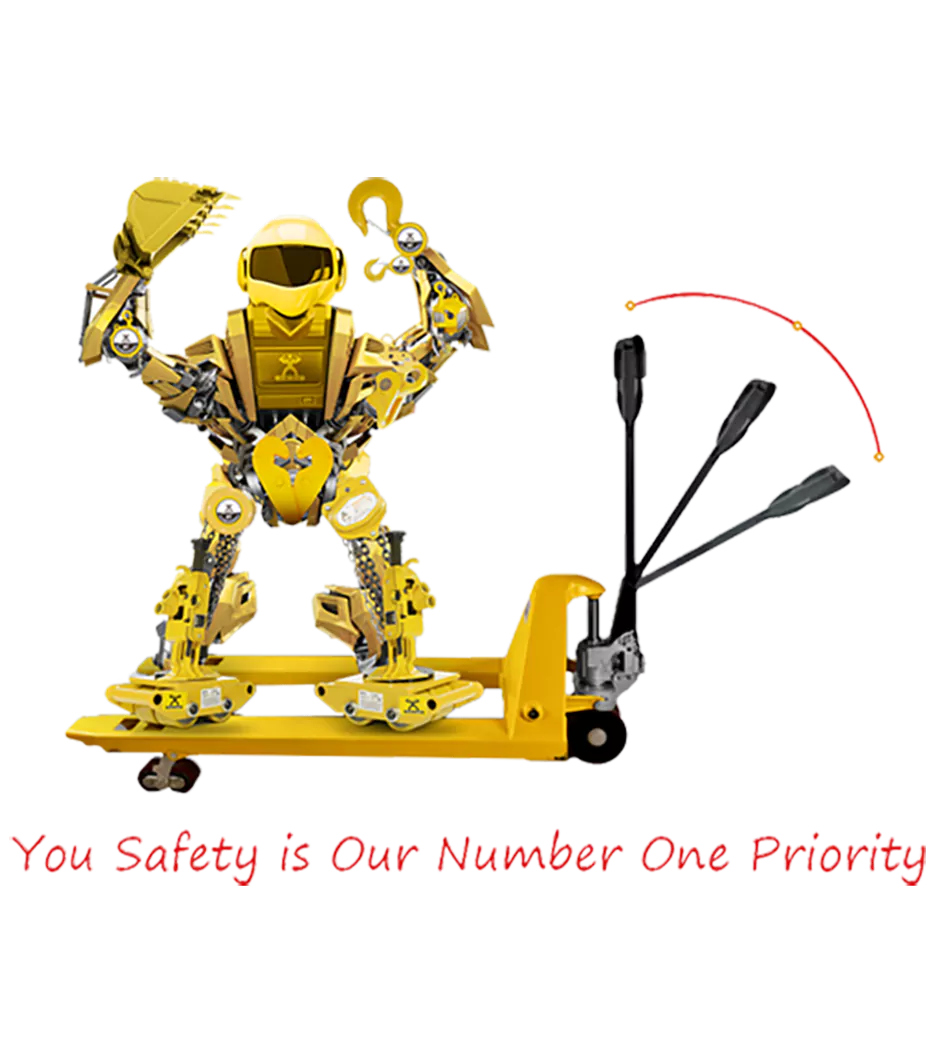In the fast-paced world of logistics and material handling, the hydraulic pallet truck stands as a stalwart companion, streamlining the movement of heavy goods with efficiency and ease. From warehouses to distribution centers, these versatile machines play a crucial role in enhancing operational productivity.
A hydraulic pallet truck operates on simple yet effective principles, utilizing hydraulic fluid and a pump mechanism to effortlessly lift and transport palletized loads. In this comprehensive guide, we delve into the workings, benefits, applications, and considerations of hydraulic pallet trucks, offering insights to optimize your handling operations in just a few minutes of reading.
Whether you’re looking to understand their mechanics or seeking guidance on selecting the right model, this exploration aims to equip you with essential knowledge to make informed decisions in material handling solutions.
What exactly is a hydraulic pallet truck?
A hydraulic pallet truck, also known as a pallet jack or pallet lifter, is a tool designed for lifting and moving pallets or heavy loads within a warehouse or other industrial settings. It operates on the principle of hydraulics, utilizing fluid pressure to facilitate the lifting and lowering of heavy objects.
The main components of a hydraulic pallet truck typically include a pump handle, forks (the part that slides under the pallet), hydraulic cylinder, and wheels for mobility. These trucks are manually operated, meaning they are powered by the operator pushing or pulling the handle to raise or lower the forks.
Hydraulic pallet trucks come in various capacities to handle different weight loads, ranging from light-duty models for smaller items to heavy-duty trucks capable of lifting several tons.
How does a hydraulic pallet truck lift heavy loads?
The lifting mechanism of a hydraulic pallet truck works through hydraulic fluid pressure. Here’s a simplified explanation of the lifting process:
- Hydraulic System: The pallet truck has a hydraulic cylinder connected to the forks. This cylinder contains hydraulic fluid (usually oil) and a piston that moves up and down within it.
- Pump Handle: The operator uses the pump handle to pump hydraulic fluid into the cylinder. Each pump stroke increases the pressure of the hydraulic fluid.
- Lifting: As hydraulic fluid is pumped into the cylinder, it pushes against the piston. This action raises the forks (and the pallet or load on them) off the ground.
- Lowering: To lower the forks, the operator releases a control lever or valve on the handle, allowing the hydraulic fluid to flow back into the reservoir. This relieves the pressure in the cylinder, causing the forks to lower slowly and safely.
Hydraulic pallet trucks are designed to provide a mechanical advantage, allowing operators to lift heavy loads with relatively little effort compared to purely manual methods. The hydraulic system ensures smooth and controlled lifting and lowering motions, making them efficient and safe tools for material handling tasks in various industrial environments.
Types of hydraulic pallet trucks available:
Hydraulic pallet trucks come in several variations to accommodate different operational needs and environments:
- Standard Hydraulic Pallet Truck: Also known as manual pallet jacks, these are the most common type. They are manually operated via a pump handle to lift and lower pallets. They are suitable for general warehouse use and can handle various load capacities.
- High Lift Pallet Truck: These trucks have an additional lifting mechanism that allows them to lift pallets higher than standard pallet jacks. They are useful for tasks where pallets need to be lifted to heights for stacking or loading onto shelves.
- Rough Terrain Pallet Truck: Designed with larger wheels and a sturdier frame, these pallet trucks are suitable for outdoor or rough surface use. They can handle uneven terrain better than standard pallet jacks.
- Electric Pallet Truck: These are powered by an electric motor rather than being manually operated. They are suitable for heavier loads and for applications where frequent lifting and moving of pallets are required with less physical effort.
- Scale Pallet Truck: Incorporates a weighing scale, allowing operators to weigh pallets as they are moved. This type is beneficial for inventory management and logistics operations where precise weight measurement is crucial.
- Galvanized Pallet Truck: Constructed from galvanized steel or coated to withstand corrosion, these trucks are suitable for environments where exposure to moisture or chemicals is a concern.
- Low Profile Pallet Truck: Designed for use with low-clearance pallets or containers, these trucks have a lower fork height to facilitate easier entry under pallets.
How to choose the right hydraulic pallet truck for your needs:
When selecting a hydraulic pallet truck, consider the following factors to ensure it meets your specific requirements:
- 1. Load Capacity: Determine the maximum weight you need to lift regularly. Choose a pallet truck with a capacity slightly higher than your maximum load requirement to ensure safe operation.
- Fork Size: Consider the dimensions of the pallets or loads you typically handle. Ensure the pallet truck’s fork length and width are suitable for your pallets to prevent instability or overhang.
- Operating Environment: Evaluate where the pallet truck will be used. For indoor warehouse environments, a standard or electric pallet jack may suffice. For outdoor use or rough surfaces, opt for a rough terrain pallet truck with robust wheels and construction.
- Height Requirements: If you need to lift pallets to specific heights for stacking or shelving, consider a high-lift pallet truck that offers greater lifting capabilities.
- Frequency of Use: For frequent use or heavier loads, an electric pallet truck may be more suitable to reduce operator fatigue and increase efficiency.
- Special Features: Depending on your operational needs, consider additional features such as a weighing scale, corrosion-resistant materials, or special wheels for specific floor surfaces.
- Budget: Finally, consider your budget constraints and weigh them against the features and durability of the pallet truck. Opt for a model that offers the best balance of performance and cost-effectiveness for your applications.
By carefully assessing these factors, you can choose a hydraulic pallet truck that not only meets your immediate needs but also provides long-term reliability and efficiency in your material handling operations.
Key features to look for in a hydraulic pallet truck:
When selecting a hydraulic pallet truck, consider these important features to ensure it meets your operational requirements effectively:
- Load Capacity: Determine the maximum weight the pallet truck can lift safely. Choose a model with a capacity that exceeds your typical load weight to ensure safe handling.
- Fork Dimensions: Check the length and width of the forks to ensure they match the size of the pallets or loads you commonly handle. This ensures stability and prevents overhang.
- Lift Height: Consider the maximum lift height of the pallet truck if you need to stack pallets or reach specific heights for shelving or storage.
- Construction and Materials: Opt for a pallet truck made from durable materials such as steel for longevity and reliability, especially if it will be used in demanding environments.
- Ease of Operation: Look for ergonomic features such as a comfortable handle grip, smooth pump operation, and responsive controls to enhance operator efficiency and reduce fatigue.
- Safety Features: Ensure the pallet truck includes safety features such as:
- Overload Protection: Prevents the truck from lifting loads heavier than its rated capacity, enhancing safety and preventing damage.
- Lowering Control: Provides precise control when lowering loads to prevent sudden drops and ensure smooth operation.
- Safety Brake: Some models include a brake mechanism to secure the pallet truck in place when not in use or when loading/unloading.
- Maneuverability: Consider the maneuverability of the pallet truck, including the type and size of wheels. Larger wheels are better for uneven surfaces or outdoor use, while smaller wheels offer greater maneuverability in tight spaces.
Safety of operating a hydraulic pallet truck:
Operating a hydraulic pallet truck can be safe when proper procedures are followed and when the equipment is well-maintained. Here are key safety considerations:
- Training: Operators should receive training on how to safely operate the specific model of hydraulic pallet truck they will be using. Training should cover proper lifting techniques, load capacity limits, and awareness of surroundings.
- Inspect Equipment: Before each use, inspect the pallet truck for any visible damage, hydraulic fluid leaks, or worn components. Ensure that all safety features (such as overload protection and braking systems) are functioning correctly.
- Load Capacity: Never exceed the rated load capacity of the pallet truck. Overloading can lead to equipment failure, accidents, or injuries.
- Loading and Unloading: When loading or unloading pallets, ensure the ground is level and stable. Position the forks correctly under the pallet to prevent instability or tipping.
- Operational Environment: Be aware of the operational environment, including floor conditions, obstacles, and pedestrian traffic. Operate the pallet truck at a safe speed and maintain clear visibility of your surroundings.
- Lowering Loads: Use the lowering control lever or valve to lower loads gently and smoothly. Avoid sudden releases that could cause the load to drop unexpectedly.
- Parking and Storage: When not in use, park the pallet truck in a designated area away from traffic or walkways. Use the safety brake or ensure the forks are lowered to the ground to prevent unintended movement.
- Personal Protective Equipment (PPE): Operators should wear appropriate PPE, such as steel-toed boots and gloves, to protect against potential hazards.
By following these safety guidelines and ensuring that operators are properly trained and aware of safe operating practices, the risk of accidents or injuries while operating a hydraulic pallet truck can be significantly reduced. Regular maintenance and adherence to safety protocols are essential to maintaining a safe working environment.
Conclusion
In conclusion, if you need a reliable and efficient pallet truck that meets your specific operational requirements, contacting Gongyougroup would be a prudent choice. With our range of hydraulic pallet trucks offering various capacities, lift heights and safety features, Gongyougroup ensures high-quality equipment suitable for diverse industrial applications.
Whether you require a standard manual pallet jack for everyday warehouse tasks or a specialized electric pallet truck for heavier loads and frequent use, Gongyougroup’s products are designed to enhance productivity while prioritizing safety and durability. Contact Gongyougroup today to discuss your needs and find the perfect hydraulic pallet truck solution for your business.






